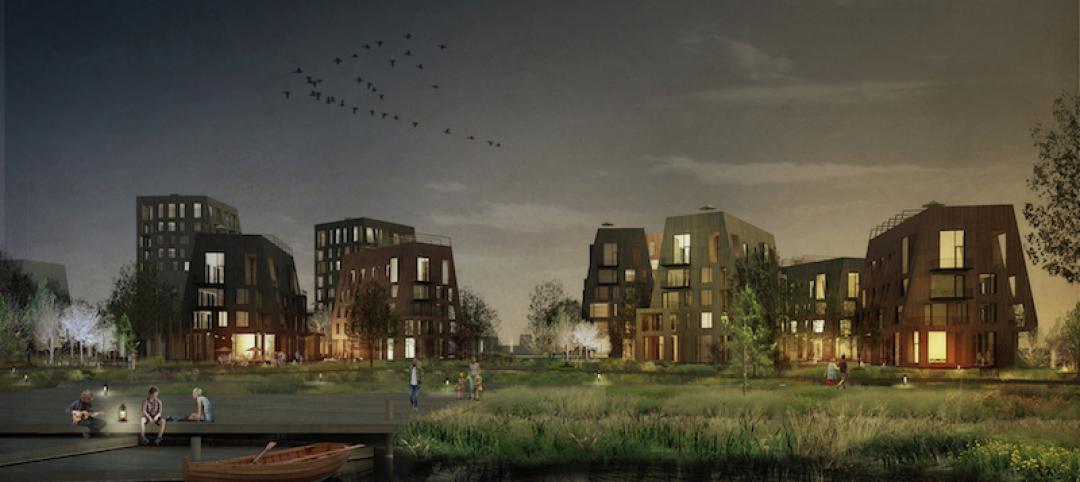The University of Arkansas’s new 202,027-sf, 708-bed residence hall, dubbed the Stadium Drive Residence Halls, is set to become the first large-scale mass timber residence hall and living learning setting in the country.
The project is currently under construction on a linear four-acre site that slopes from north to south. Within this relatively small, densely planted buffer zone the project is shaped by the concept of “a cabin in the woods” that provides a new university gateway. A serpentine band of student rooms defines three protected and distinctive courtyard spaces.
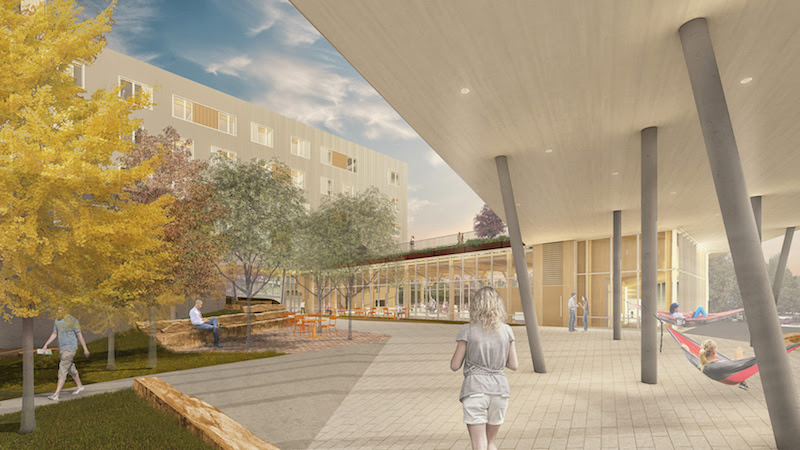 Rendering courtesy Leers Weinzapfel Associates, Modus Studios, Mackey Mitchell
Rendering courtesy Leers Weinzapfel Associates, Modus Studios, Mackey Mitchell
The north building includes a “front porch” that is the main entry point of the complex and a “cabin” at the passage’s midpoint that is the main gathering space. The “cabin” includes a community kitchen, lounges, a quiet hearth, and a rooftop terrace. The lower courtyard includes workshops that comprise performance spaces, music and recording studios, and maker spaces.
Student rooms are arranged in wings that comprise semi-suites for two students and pods for six to eight students. Study rooms at the end of each wing are naturally lit via large windows and create a series of “lanterns” along Stadium Drive. The buildings’ inner cores feature two-story lounges with residential kitchens designed for community interaction between the upper and lower floors.
Wood is on full display throughout the project with exposed structural wood ceilings present in student rooms, study rooms, floor lounges, and ground-level common spaces. The “cabin” also includes wood ceilings and trusses that span the full width of the lounges.
 Rendering courtesy Leers Weinzapfel Associates, Modus Studios, Mackey Mitchell
Rendering courtesy Leers Weinzapfel Associates, Modus Studios, Mackey Mitchell
The exterior of the project highlights metal. Zinc-toned siding with accent panels of textured copper-toned and white siding creates a floating band of living space above the natural landscape. A ground-level passage winds through the landscape and connects the various courtyards.
The project, which is the result of a design collaborative led by Leers Weinzapfel Associates, Modus Studio, Mackey Mitchell Architects, and OLIN is scheduled for completion in fall 2019.
Related Stories
Wood | Sep 21, 2016
‘The Smile’ showcases the structural potential of CLT
Weight for weight, CLT is stronger than concrete and can be machined to incredibly high tolerances.
Wood | Sep 6, 2016
Atlanta suburb prohibits wood-framed construction for high rises
The new building code prevents any structure with more than three stories from being built from a CLT frame.
Great Solutions | Aug 23, 2016
Reclaimed wood paneling adds color to retail and hospitality projects
Colorburst panels are available in four stock options—Robin Egg Blue, Viridian Green, Haute Pink, and Cascade White—as well as custom colors.
Regulations | Aug 8, 2016
EPA toughens rules to reduce formaldehyde exposure from composite wood products
Products will now have to be labeled as compliant to the new rules.
Concrete | Aug 2, 2016
Concrete Association builds case against cross-laminated timber
The campaign asserts that not enough is known about CLT in construction
High-rise Construction | Jul 14, 2016
Shigeru Ban designs tower expected to be world’s tallest hybrid timber structure
To lessen the carbon footprint, Terrace House in Vancouver will be made of wood sourced from British Columbia.
Wood | Jul 14, 2016
The history of building with wood [infographic]
The first timber home was built 10,000 years ago. Now 40-story wood skyscrapers are being constructed.
Sponsored | Wood | Jun 21, 2016
Flameless water and gas install for Noah’s Ark
When you’re building the largest timber-frame structure in the world, you don’t want an open flame anywhere near the construction site.
Urban Planning | Jun 15, 2016
Swedish ‘Timber Town’ proposal from C.F. Møller provides a unique blend of nature and city
The development acts as a transition area between a traditional urban landscape and parklands.
Wood | Apr 29, 2016
Anders Berensson Architects designs 40-story wooden skyscraper for Stockholm
The structure, which will be made entirely out of cross-laminated timber, will rise 436 feet into the air, making it Stockholm’s tallest building.


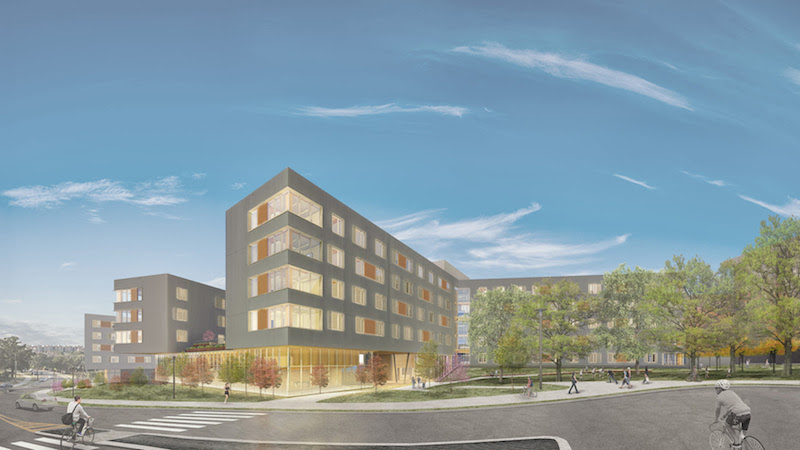
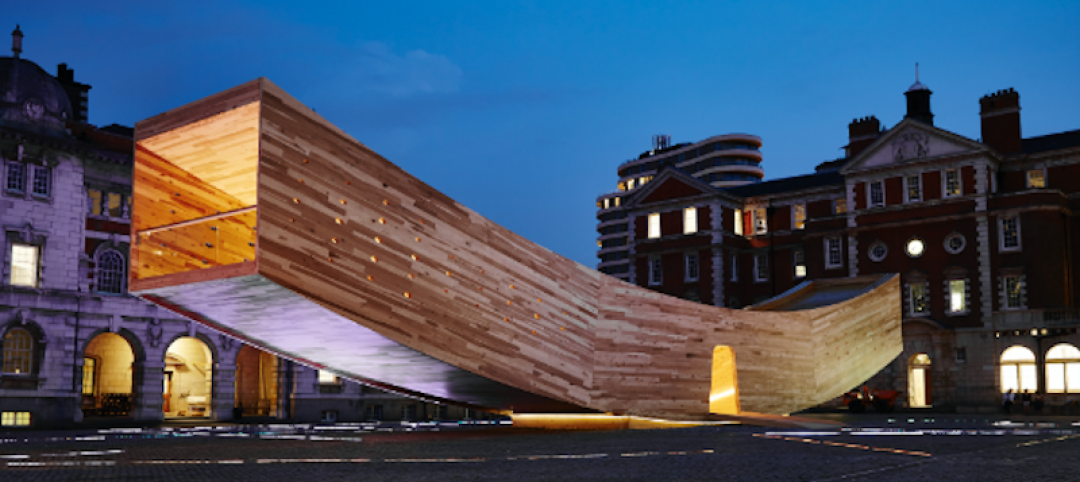



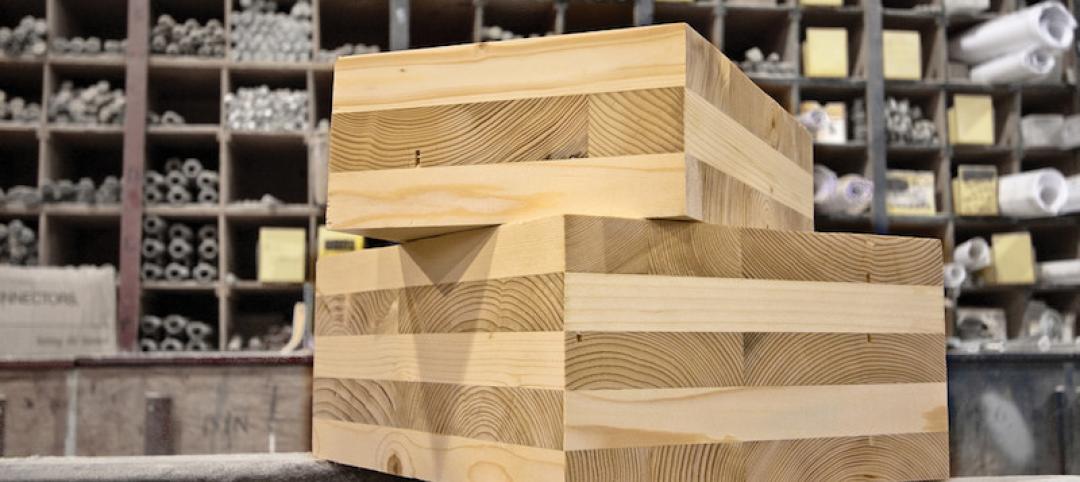

![The history of building with wood [infographic] The history of building with wood [infographic]](/sites/default/files/styles/list_big/public/Richmond_Olympic_Oval_intern_View.jpg?itok=CT3sQmdz)

